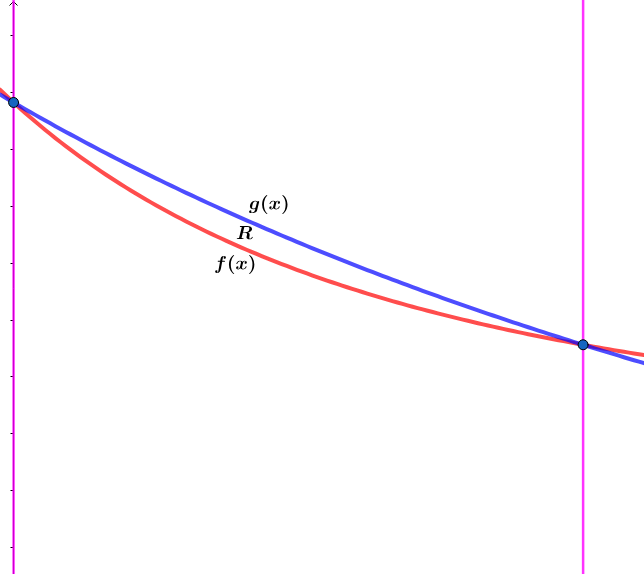Volume of Solids of Revolution

Let be Euler's number and .
Let and .
If and , find the volume of the region bounded by the two curves and on when revolved about the -axis to seven decimal places.
The answer is 0.2854552.
This section requires Javascript.
You are seeing this because something didn't load right. We suggest you, (a) try
refreshing the page, (b) enabling javascript if it is disabled on your browser and,
finally, (c)
loading the
non-javascript version of this page
. We're sorry about the hassle.
f ( x ) = lim n → ∞ ∑ j = 1 n ( n j ) n ( e x 1 ) n − j = lim n → ∞ ∑ j = 0 n − 1 ( 1 − n j ) n ( e x 1 ) j = ∑ j = 0 ∞ ( e x + 1 1 ) j = e x + 1 − 1 e x + 1 on x > − 1 .
Let g ( x ) = a x + b 1 .
g ( 0 ) = f ( 0 ) = e − 1 e ⟹ b = e e − 1 and g ( 1 ) = f ( 1 ) = e 2 − 1 e 2 ⟹ a = e 2 e − 1 ⟹ g ( x ) = ( e − 1 ) ( x + e ) e 2 .
Let I 1 = π ∫ 0 1 ( f ( x ) ) 2 d x = π ∫ 0 1 ( e x + 1 − 1 e x + 1 ) 2 d x .
Let u = e x + 1 ⟹ d x = u 1 d u ⟹
I 1 = π ∫ e e 2 ( u − 1 ) 2 u d u
Let w = u − 1 ⟹ d w = d u ⟹ I 1 = π ∫ e − 1 e 2 − 1 w 2 w + 1 d w = π ∫ e − 1 e 2 − 1 w 1 + w − 2 d w = π ( ln ( w ) − w 1 ∣ e − 1 e 2 − 1 ) =
π ( ln ( e + 1 ) + e 2 − 1 e )
I 2 = π ∫ 0 1 ( g ( x ) ) 2 d x = ( e − 1 ) 2 e 4 π ∫ 0 1 ( x + e ) − 2 d x =
− ( e − 1 ) 2 e 4 π ( x + e 1 ) ∣ 0 1 = ( e 2 − 1 ) ( e − 1 ) e π e 4
⟹ the volume V = π ∫ 0 1 ( g 2 ( x ) − f 2 ( x ) ) d x = π ( ( e 2 − 1 ) ( e − 1 ) e ( e 2 − e + 1 ) − ln ( e + 1 ) ) ≈ 0 . 2 8 5 4 5 5 2